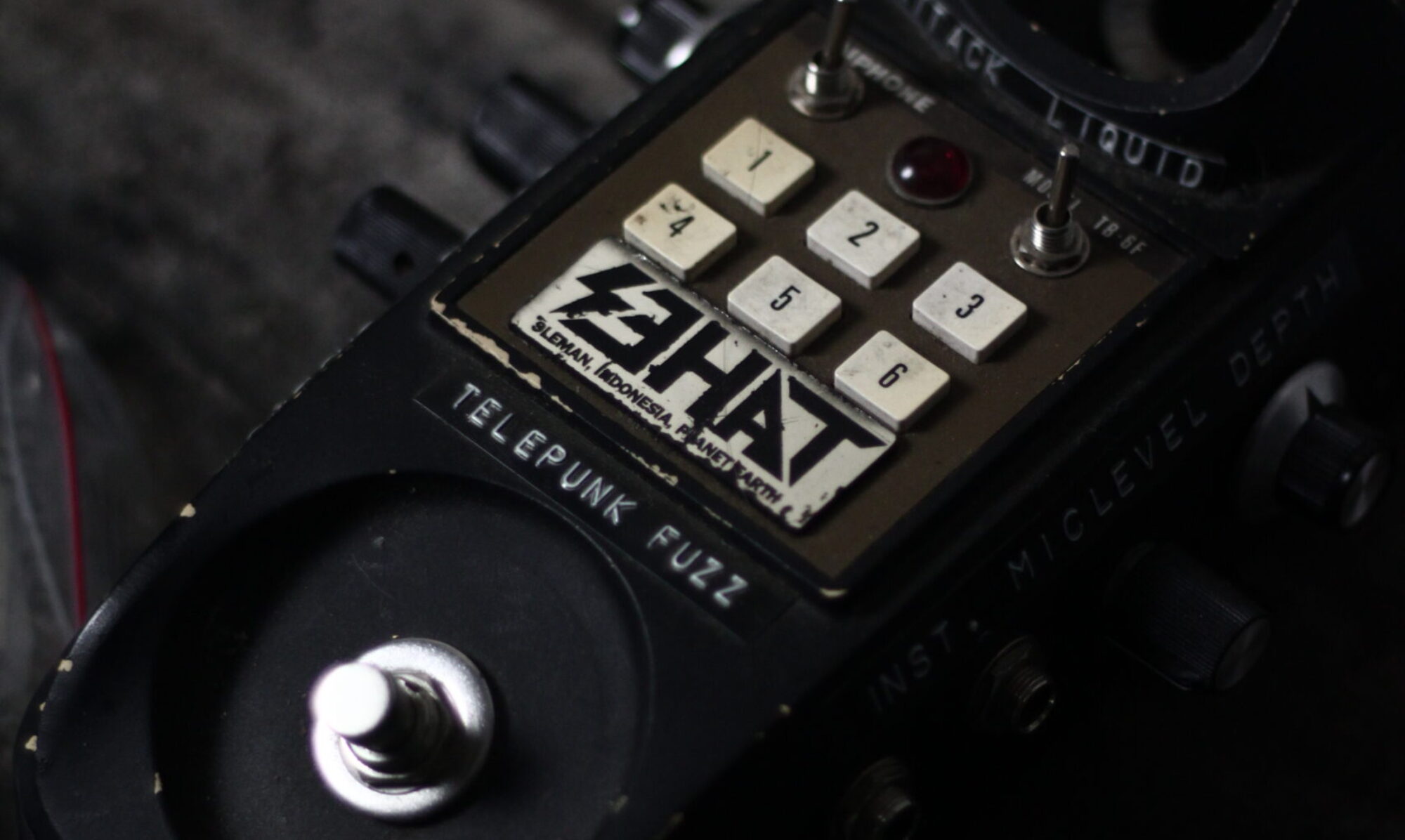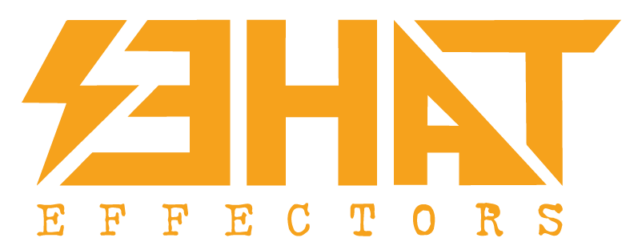Interview with Dan Minner from ADD (Audio Disruption Device) Pedals

Hello my friend, really appreciate you want to join the interview. Audio Disruption Devices is very cool name man, and that’s really describe your pedals man. First time I saw your pedals is from instagam, very cool looking pedal, huge enclosure, etching artwork and its sounds so cool! Let talk about your padal, Optical Ring! I call that pedal “beyond somewhere effects” hahaha tell me about that pedal?
The Optical Ring was my first completely original circuit. As you know, I like weirder effects and obviously ring modulation fits that bill. So, I decided to build a ring modular as the first real ADD pedal. However, I was pretty clueless as to how ring modulators work and…well, I am the kind of person likes to learn by doing (and frequently failing) more that intense research (I do enough of that at my real job so I try to remove it from my hobbies). As a result, I don’t think it works like most ring mods do. It is very VERY low-tech, but sometimes low-tech solutions produce truly unique and inspiring results! I like to think the Optical Ring does this. So, with a super minimal amount of research I got the basic traditional passive ring mod design (i.e. two transformers and the 4 diode ring). Then I needed to come up with some sort of carrier for the ring mod. I got the idea to use an optical Theremin circuit. It was pretty straight forward and because I had been circuit bending for a while I was really familiar with light sensitive resistors (because those are always fun). Plus, I thought I might be able to make them control the frequency by waving my foot over the pedal or something cool like that. BUT, that didn’t exactly happen. I had my guitar input and the Theremin going into the passive ring mod section and the results were…well, kind terrible.
The optical Theremin was always screaming in the background. I had the figure out a way to somehow gate the sound when I wasn’t playing. I knew nothing about gates, and as a said above I like the “doing” more than the researching so I tried to think of a simple way to gate the sound. The optical Theremin was controlled by two light sensitive resistors: one controlled its frequency and one controlled its volume. Then I came up with a plan! I built a small fuzz circuit with clipping leds and added it into the mix. I rolled the clipping leds up with the light sensitive resistors of the optical Theremin section. At that point my guitar went into the fuzz circuit and my playing controlled the clipping leds, which in turn controlled the optical Theremin being used and the ring mod carrier. The result was perfect! I now had the gate I needed (no playing = no clipping = no Theremin volume) and even better the amount of clipping had an effect on the frequency. What this meant is that you could still set the frequency with a dial on the pedal, but as notes faded they would decay and morph the frequency as the light from the clipping leds faded. It was then that I knew I had something unique that I was happy with. The circuit has continue to evolve and has a ton of sounds on tap now.
So, lets sum this question up: 1) the name is really literal. The OPTICAL RING is a RING mode with an OPTICAL Theremin as the carrier; 2) I really have no idea what I am doing, I just wing it and something ignorance coupled with creativity fosters unique results; and 3) now you know all the secrets of the optical ring. Also, if you have an optical ring there is a bonus feature. Plug it into your amp and unplug the input. The clip leds will light and you now have access to the internal Theremin; it is a pedal and an instrument.
Your work is piece of art for me, did you build those by yourself? I mean you did all those enclosure etching? Soldering the guts and did anything by yourself? How you start it all? I mean you’re so tough man, if I doing that, maybe I’m quit this game in first year,haaahhaah…
Thanks. Pretty much, but it has slowly progressed to that. I started diving into pedal building like 4 years ago (I think…). At that time, it was ONLY art. I was really inspired by Death by Audio pedal artwork: big enclosures, big knobs, and just industrial looking. I knew very little about electronics, but I needed a new art outlet. I actually have a PhD in a Chemistry background so the chemical etching of enclosures was not really a hurdle at all. I bought some enclosures and gave it a try. I was really pleased with the results so I joined a couple DIY pedal forums (primarily Madbeans, which is a collection of really helpful, encouraging, and just all-around great people). I made a classifieds ad to trade enclosure for circuits. It went over really well. If someone was inclined they would message me. I would design and etch two custom enclosures and would ship them the enclosures. They were load them with circuits and would keep one themselves and ship me one back. This was fun, but also had its share of frustration as you would expect (sometimes I would get a pedal back in a week, sometimes a month, sometimes a year, sometimes never). After doing this for a while I got to the point where I didn’t really want to rely on other people anymore. I starting dabbling at building the circuits myself. The people on that forum were amazing and a couple gave me some parts stock piles and spare pcbs to get started with. Now I do MOST things by myself: enclosure art, fabrication, circuit design, soldering, etc.
There are still some key people I rely on though, primarily Alec at Mask Audio Electronics. He takes my ridiculous (normally hand drawn) chicken scratch circuit sketches and ideas and translates them into pcbs for me. He is a wealth of knowledge and is always eager to help. He has done the pcb layouts for all ADD production pedals (i.e. non-circuit bent things) at this point. In doing so, he is really the reason why I am able to make small runs of things and offer them to people. Without him it would be even smaller quantities of stuff on cheesy perf boards.
Another your cool pedal is, I don’t know what is that, it only write PDS1001, what its name? I wanna know more about that pedal
Oh man, first of all, and no disrespect, if you don’t know what PDS pedals are you are REALLY missing out! They are not mine designs, I only modify them. If you ever see any pedals that I have built with “PDS” in their name, they are rehoused and circuit bent units. This includes most of the tabletop and joystick-controlled pedals I make. The PDS pedal series is a 1980’s DOD(digitech) line, and THEY ARE MAGICAL. If you like the weird and unusual these are largely untapped treasures. They have several delays (1001, 1002, 2000, 2020, 8000), modulation (1700) and a reverb (I have never been able to get my hands on one of those). Even stock, these pedals can do strange things, I only mod them to make them weirder and more fun for people like us.
Normally with PDS1001 units I upgrade switching (sometimes using arcade buttons and joysticks instead) and may controls to ramp feedback. I also often externally mount master time controls and add additional modulation circuits. The inside of these pedals are a circuit benders paradise with an array of ICs; I normally add some sort of circuit bent bit crushing sound too.
You known as a “wizard of weird sound” for me, what is most “standard and simple pedal” you ever build?
I love LM386 stuff. The first “fuzz” circuit I ever build was something called the “dead easy dirt” (you can google it). I think “culturejam” on the DIY forums created it (I hope I am crediting the right person), but it is only like 4 components and sounds great. In terms of ADD stuff, my signal overloader is the simplest pedal I build, but also the pedal that I personally use the most. When I made that I had a pretty large collection of old and obscure DBA pedals, back from when they used to make custom stuff. I had one random custom pedal that had an extra little boost circuit that I really liked. I always used the boost but never the other half of that pedal so I decided to pull some inspiration from that boost. I breadboard it, changed components to better suit my taste and to make it behave more like how I wanted it to. Then I decided to double it. So it was the boost running into another boost. I ran it on my pedal board for a while and after finally figuring out how to make a suitable gain control I was left with a super versatile pedal that could go from boost to a fuzzy overdrive.
Last, did you ever think about making mass production your pedal? Your pedal is so great man, lot of people will love it!
Yeah, that would be great and I would really love to see my stuff on more boards. However, a few things come into play with this:
1) I am really not a “good” salesman;
2) with 3 kids (really 4, I know that sounds confusing and it is); and
3) a full-time job.
With respect to 2) and 3), I normally have some time on the weekend and the hours from 9:00pm-midnight to actually work on stuff. So it is hard to release more than 10-15 units of something at a time. In terms of 1), the salesman thing, I have never really cracked to code I guess…or perhaps it is really because I just haven’t focused really focused my energy on pushing my stuff yet (I don’t have a real website, I don’t really put myself out there much, I don’t use hashtags…haha, I am assuming that helps on social media). What I do have is loyal buyers. Fo whatever reason I don’t ever seem to generate a ton of new buyers with each pedal release. BUT, the same people tend to buy my pedals over and over again. I think this means that I am doing something right, and people are hooked after getting one. I guess I just don’t know how to easily attract new people. Granted, like you, I am not making mainstream pedals. I have no desire to ever make a tube screamer, but I do strive to make pedals that are not only “out there,” but are also still very usable and musical. So I guess the short answer to your question is, “Yeah I would love to, but I don’t know how to make it happen right now.”

